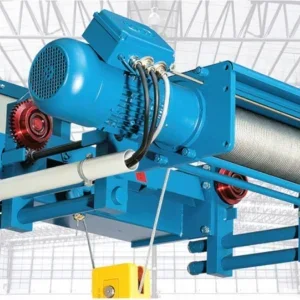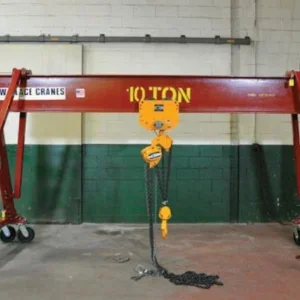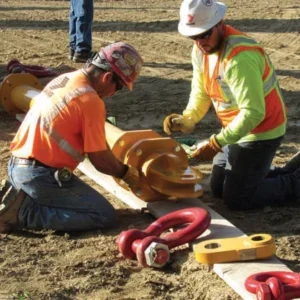The leader in the last issue of HOIST, entitled “In defence of the little man” highlighted a problem that concerns many independent crane producers world-wide: consolidation. Is The Economist magazine right to suggest that having fewer producers would be good for the industry? Is this an irresistible force? I would argue that alliances between independents provide a better alternative.
The opposition case
There are several arguments for consolidation. There is the over-capacity argument – too many producers chasing too few orders. There is the economy of scale argument – the bigger enterprise is more efficient. There is the R&D argument – that innovation is expensive and only the biggest companies have pockets deep enough. All these arguments have flaws.
There may be over capacity in some parts of the world, but in Europe, and the UK in particular, successive recessions and the strength of Sterling have forced many smaller uneconomic producers out of the market. This leaves a core of highly efficient producers.
Scale economies are achievable to a degree. But cranes are not consumer durables – they are engineered to meet individual needs. Standardisation of beam designs, end trucks, hoists and so on brings some economic advantage – but to liken the crane business to tractor production is a totally spurious comparison.
The R&D argument also applies to some extent. However, crane and hoist development are not rocket science. The impact of new design technologies has reduced both costs and development times, lowering the R&D threshold. Who is to say that the biggest companies will necessarily be motivated to invest in innovation anyway? More often they are driven by the need to pay back borrowings and achieve good returns for shareholders. The downside of this is that any failure by the majors to meet their obligations to their owners introduces a threat of instability to our industry.
The Street Approach
Street is an independent family owned business. Since its foundation in 1946 it has grown organically and is now the largest volume EOT crane producer in the UK with approximately 40% of the market. This equates to a production of about 400 whole cranes per year, all in the 1t to 150t category. Crane kits for export and component sales also make up a significant proportion of turnover.
With limited potential for further growth in the UK we have developed overseas markets, concentrating on building up component sales to local crane builders around the world. The policy has been highly successful with producers in Europe, the Middle East, the Pacific Rim, Australia and New Zealand becoming distribution partners.
Following the success of the partnership programme elsewhere in the world, we were keen to develop business in North America. Some time was taken to understand the market. North America is a prosperous and stable economy that has not experienced the same cyclical problems that have affected Europe and most recently the Far East. Traditionally there were a large number of independent crane builders and hoist manufacturers.
As the majors have bought up independent hoist makers so the choice of products available to crane builders has been reduced. Therefore they often find themselves competing with other crane makers offering an identical package with price and delivery as the only significant differentiators. Additionally, as the majors now begin to buy up crane builders, many independents are finding that their hoist supplier is also their main competitor. This has created an opening for Street.
Our North American campaign began in 1998. Approaches were targeted to independent crane producers with a bias towards those that did not have their own hoist production facilities. These are precisely the people most affected by the international majors.
Canada, rather than the USA, was identified as the initial target market. Apart from the closer cultural ties it was also felt that Canadians would be more receptive to the Street message because they have no indigenous hoist manufacturers. This indeed proved to be the case.
An attractive package was developed that enabled us to offer main dealer exclusivity to crane makers within a given territory. These crane makers could use Street hoists within their own crane packages and receive full technical and commercial support. As main dealers they are also free to sell-on product to smaller crane makers and service companies.
We have now secured exclusive regional distribution with crane builders in Canada servicing New Brunswick, Ontario, Alberta and Vancouver. Inroads into the USA have also been made with eight crane makers placing significant stock orders and a number of further distribution deals under negotiation. In its first year trading in North America Street has received $1.7m in orders.
O’Brien Installations, our partner servicing Ontario and the Maritimes from bases at New Brunswick and Stony Creek is a keen convert. It uses Street ZX hoists as a part of the package on its O’Brien branded EOT cranes.
O’Brien also uses the Street SC CompuCrane package for design and specification of beams, end trucks, hoist selection and the rapid investigation of crane ratings.
Conclusion
One year on from the start of the marketing phase of the North America campaign, I am confident that we have a winning strategy. The account gains secured so far are encouraging, but represent only a fraction of the potential.
I am confident that there is a bright future for independent crane builders, like Street in the UK and our partners around the globe. Independents are closer to customers and more responsive. Most of us are crane people and therefore have a focus that may be lacking in larger, diversified, mechanical handling companies. Most of all we can show that investment in innovative technology is viable for independents where they join forces to share mutual benefit. H






